Padharo Mhare Desh !! ,,,,Welcome to the land of opulence and grandeur ..
Keshariya Balam Aao ni padhaaro mhaare desh !
Ni Keshariya Balam Aao ni padhaaro mhaare desh !!
Ek Dholo, dooje Maaravan, teejo kasoomal rang,
He kesar soo pag la dhovatee,ghare padharo jee !!


Rajasthan the land of Mahrajas, Forts, Mahals, lakes emotions and vibrancy, Rajasthan with its royal essence welcomes you with all its heart.some part of Rajastahn has traces way back to the Indus valley civilization, Vedic Saraswati river and stone age which was around 5000 to 200000 years ago. Rajasthan hasbeauty that never betrays,.The two things appears immediately in our mind are camels and dessert. Rajasthan is a magical land full of cheerfulness and quintessential charm. Even in the age of modernization the state remains truthful to its customs and roots.
Rajastani cuisine is influenced by both the war like lifestyle of its inhabitants and the availability of the ingredients in this arid region. In the dessert like land, scarcity of water and fresh green vegetables has all had their effect on the cooking. It is also known for its snacks like Pyaai Kachori, Mirchi Bada, Bikaneri Bhujia. Other famous dises are malidar lassi and Lashun ki Chatani. The one thing wohc always standout is the sheet strength and resilience of the people in the face of seemingly insurmountable.
Mawa Lassi form Jodhpur. Alwar ka mawa, Malpuas form Pushkar and variety of sev from Bikaner. “ Paniya” gheiya” form Mewar. Here Rajputs preferred the vegetarian food whilMarwari,brahamins,Vaishvas and Jains preferred vegetarian diet. So the stage has a myriad of both types of delicacies.

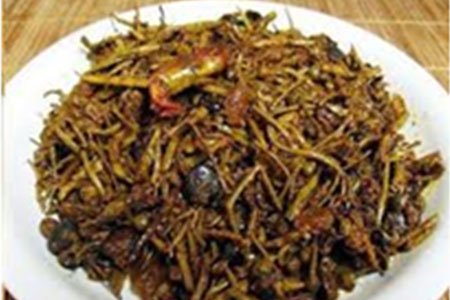
Rahastanis still hold on their traditions with stoic honor and undaunted courage
The Rajasthanis cultivated hardy grains like millet, maize, jowar and ragi, as they used less water and lasted much longer in storage. The growth of wheat and vegetables was restricted to the more fertile areas. They learnt to use any and all resources for consumption, which is the basis for the mouth-watering delicacy ker sangri.
It is called a Ker or Kair shrub that has no leaves on it. It is simply a huge bunch of thin branches with triangular thorns. It produces a green berry like fruit called Ker or Kair that is used for cooking curries. Ker or Kair is a thorny bush (capparis decidua) found in the arid region of Rajastnan Ker are wild berries which have a tangy and peppery finish, while sangri are wild
beans that grow abundantly in the desert. They are cooked together in water or buttermilk along with an assortment of spices and are an integral part of Marwari cuisine.
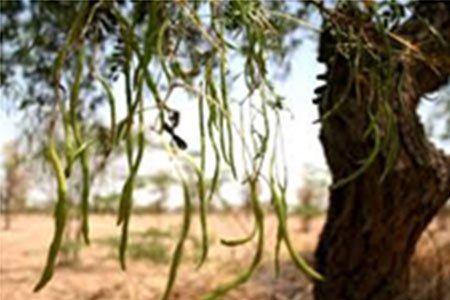
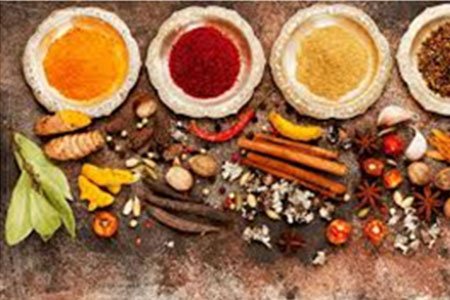
Rajasthani cuisine characters by its extensive and impeccable use of spices, as they can be grown and cultivated easily. “”Mirchi Seth “ character in Aamir’s Khan “Sarfarosh “movie had shown vivid picture of spices market of Rajasthan.
Condiments like tamarind, coriander, cumin, sesame, turmeric, ginger, garlic, cardamom, carom seeds, amchoor (dried mango powder), cinnamon, nigella seeds, aniseed, cloves, asafetida, dried fenugreek and most importantly, red chilies, are used to create intricate recipes that burst with flavor, elevating otherwise humble ingredients to lofty dimensions. These are generally powdered in a heavy iron mortar and pestle just before they are added to the food, so that they retain their coarse texture and natural flavour. They have mastered the art of drying condiments to preserve their flavor and longevity, and dried red chilies from Rajasthan are highly sought after across the country. Every other ethnic group in Rajasthan abstained from meat and partook in a rigid vegetarian diet that made use of local produce, both domestic and wild, and extensively relied on dairy products as both the base for curries and for cooking. The Jains, who were a fairly large subgroup and prominent in business circles, even abstained from most root vegetables, and fastidiously avoided onion and garlic, which are integral parts of most Rajasthani cooking but are believed by the Jains to embody the principles of greed, lust and anger.
Further proof of Rajasthani ingenuity when it comes to adding flavor can be found in their incredible range of chutneys, from the tomato to the tamarind. They have also perfected the art of making papad, a thin, crisp disc-shaped savoury confection made from flour that can last for months. Snacks like the ubiquitous kachori, a truly delicious fried savory or sweet pastry stuffed with various ingredients, most famously onion and mawa, are the stars of the street food culture here.
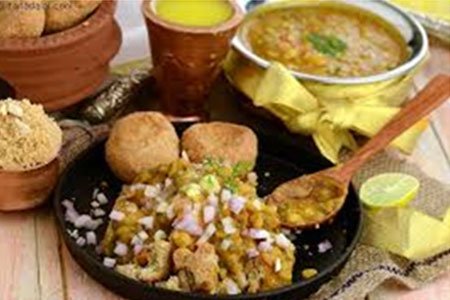
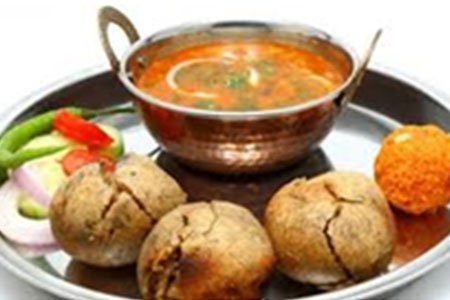
Dall Bati Churma
This is the state’s classic signature dish. Baati is hard, unleavened bread cooked in the desert areas of Rajasthan. Baati is prized mainly for its long shelf life, plus it requires hardly any water for its preparation. It is always eaten with dal (lentil curry). The dal is made of lentils while churma is a coarsely ground wheat mixture crushed and cooked in ghee and jaggery or .
Gatte Ki Subzi
Most of Rajasthani cusine came to fruition as a result of the arid conditions. For this dish you don’t need any fresh vegetables and that’s its speciality. This curry is made with gram flour dumplings (steamed and lightly fried) and tangy gravy made up of tomato, buttermilk and spices. It’s best enjoyed with rotis (Indian flat bread) and rice.
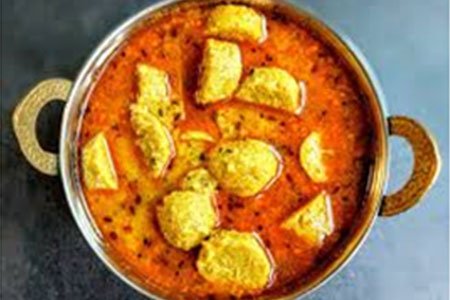

Ghevar
A special sweet dessert from Jaipur that is essentially a disc made from flour, soaked in ghee, milk and topped with sliced almonds. This sweet dish has a crunchy texture and is made in a mould. There are varieties of Ghevar that can be prepared from a plain, mawa (condensed milk) and malai ghevar (cream).
